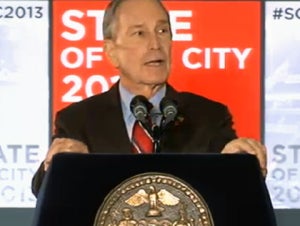 Three months ago California officially opened its world class cap-and-trade program for greenhouse gas pollution – establishing the first ever carbon price in the Golden State and leading the nation on a path toward true climate change action.
Three months ago California officially opened its world class cap-and-trade program for greenhouse gas pollution – establishing the first ever carbon price in the Golden State and leading the nation on a path toward true climate change action.
Earlier this week, California’s march toward meeting emissions reduction goals was bolstered with a second auction of carbon allowances in the cap-and-trade program, and just today, the results of that auction were released. All signs point to marked success for the program in the second auction, and suggest California is on its way toward fully realizing the goals of the Global Warming Solutions Act of 2006 (AB 32).
As shown by the results released at noon today, overall participation in the February 19, 2013 auction was high, with almost 2 ½ times more credits bid on than were sold. Initial reports show this has beaten all market expectations, and the clearing price of $13.62 suggests a strong belief in the longevity of the overall program.
By selling more than 7 million state-controlled carbon allowances, California’s second auction also raised about $83.5 million – money that will be used to advance the goals of AB 32. Furthermore, since recent legislation was passed in 2012 that requires at least 25% of the auction proceeds to benefit disadvantaged communities, this auction will inspire more than $20 million in investments that can benefit Californians in need.
With respect to who participated in the auction, market statistics show there was approximately a 25% increase in the number of qualified auction participants as compared to the last auction. This increased participation was no doubt partly responsible for the fact that 2013 credits were purchased by a diverse array of bidders (as opposed to credit purchases being concentrated in a few entities). This diversity of participation, coupled with the strong regulatory oversight being used by state agencies and expert market monitors is an important guard against market manipulation and is yet another example of how this market looks to be strong and diverse, a good sign moving forward.
In addition to auctioning off credits that can be used for emissions obligations in 2013, California’s second auction also offered advance vintage credits that can be used for compliance starting in three years (2016). Based on the sales volume of these credits (greater than 4.4 million sold), there continues to be moderate demand going forward for future vintage credits, another indication of the belief of the programs longevity.
A California carbon price opens the door for cleaner energy and clean air, as the State finally has an ongoing cost that can be attributed to carbon pollution. California’s next auction will occur in 3 months, though investments made now can be assured their carbon reduction value can be both calculated and counted on. As shown by today’s auction results, while much of the nation has waited to take concrete action against climate change, California’s train is out of the station and picking up steam every day.














